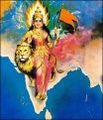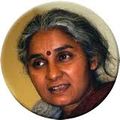User:User/My sandbox
Who are the learners?
Write down a concise description of the intended learners for your resource.
What are the teaching objectives?
List what you aim to teach or what you expect the learners to do after working through your teaching materials.
Specifying the characteristics for your resource
1. What is the subject? For example, Geography, History, Education 2. What is the topic? For example, Glaciers, First World War, Educational technology 3. What type of resource are you developing? For example, Tutorial, Handout, Workshop, Study guide, Textbook, Handbook, Toolkit, Research paper. 4. Sector For example, Preschool, School, Tertiary, TVET (Technical and vocational education and training), Higher education , or Adult and community education 5. Level
- In the case of school, specify the year (Year 1 through to Year 12)
- In the case of Tertiary education specify the year where Year 1 is the first year of tertiary study. Therefore Year 4 would be the Honours year or the 4th year of a four-year Bachelors degree.
6. Complexity Indicate the level of difficulty you are planning. This relates to the complexity at the level you specified above. For example a difficult lesson for a Year 8 Maths class. There are three options:
- Easy
- Intermediate
- Difficult
7. Intended Audience For example, pupil, student, teacher, lecturer, trainer, parent/carer, administrator, community member. 8. Learning hours That is the notional or intended time that a learner is supposed to spend on the resource, eg 1.5 hours
<flash>file=WEcreateaccount.swf|width=800|height=380|quality=best</flash>
My Peer Learning in this Workshop
Day 1
My Peer Learning
Liked the following on wiki of [1] byUser:Playnice_nz . How ever links given were not opening as the files had been moved from the reference site links
The implications for teaching and learning
“I accept chaos. I am not sure whether it accepts me.” Bob Dylan
Wikis are powerful and flexible collaborative content development tool that empowers learning and knowledge creation in a distributed learning community. From a broader educational perspective, wikis allow faculty and students to engage in collaborative activities and knowledge creation that might not be possible in a traditional educational environment. The versioning capability some wikis have can show the evolution of a thought process or a concept as students and faculty interact and contribute to the wiki.The more people embrace the open nature of wikis adoption rate and use is likely to accelerate and evolve. Their future potential seams limited only by one’s imagination and time
Related web sites
- Manual of Style -Excellent guidelines on writing a wiki article.
References
Davis, J. (2004). Wiki Brainstorming and Problems with Wiki Based Collaboration. Retrieved September 10, 2007, from [2] Educause. (2005). 7 things you should know about… wikis. Retrieved September 18, 2007, from [3] Flemming, F. (2004). Collaborative Patterns. Retrieved September 18, 2007, from [4] Lamb, B. (2004). Wide Open Spaces: Wikis, Ready or Not. EDUCAUSE Review, 39 (5). Retrieved September 25, 2007, from [5] Lynnwood, B. (2007). Wiki Facilitation Concept Development. Retrieved September 5, 2007, from [6] Skyloom. (2007). Wiki Facilitation. Retrieved September 10, 2007, from [7] Wikipatterns.com. (not dated). Seed it with content. Retrieved September 19, 2007, from [8]
Wikipedia: Etiquette (2007). Wikipedia: Etiquette. In Wikipedia: The Free Encyclopaedia, Retrieved on 18 Sept 2007, from [9]
Liked the following on wiki of Ms saroja Ganapathy

|
Activity |
| Following Instructions | |

|
Activity |
| Following Instructions | |

|
References and Bibliography |
Liked on wiki of Dr Rohini Kelkar
Liked on wiki of [Dr Sujata Dhopte]
Today is: 22, December 2024. UTC/GMT Time is: 02:49 HAPPY NEW YEAR
Medha PatkarWatch Narmada Bachao
Nightingale Lata Mangeshkar Listen my favorite song
- ↑ Encyclopædia Britannica
- ↑ http://www.w3.org/
Day 2
http://wikieducator.org/User:Pramodkumartk
I liked the concept of database of OER resources in India
Day 3
This is a simple multiple choice quiz built from nested unordered lists. This simplifies authoring and is easy enough to manipulate with Javascript into quiz form.
- Question 1
- Answer 1
- Feedback 1
- Answer 2
- Feedback 2
- Answer 3
- Feedback 3
- Answer 1
- Question 2
- Answer 1
- Feedback 1
- Answer 2
- Feedback 2
- Answer 1
Underlined words become blanks that the student must fill in. Each entry is marked as soon as the cursor is moved from the blank (or group of blanks in the case of consecutive words).
- Lake Te Anau in Fiordland is New Zealand's second largest lake.
- The takahe which was thought to be extinct was rediscovered in Fiordland.
Jim's Stuff
My learning

Day 4
| Problem based Learning Assessment
=== Day 5 ===






